Pandan Juice : The Magical Thai Drink You Need to Try Now
Pandan Juice has become a beloved drink in Thai cuisine, celebrated for its striking green color, aromatic fragrance, and naturally refreshing taste. At JustThaiRecipes, our journey started with a passion for sharing Thailand’s bold and beautiful flavors with the world. On our About page, Lina, the heart behind the recipes, shares how she began crafting authentic Thai dishes to bring joy and excitement to home kitchens everywhere.
This drink, made from the fragrant pandan leaves, reflects that mission perfectly simple, healthy, and bursting with tropical vibes. In this article, you’ll discover what pandan juice is, its health benefits, its unique flavor, and even how to make it yourself. Along the way, you’ll also learn about its variations, uses, and where to buy it. Check out Thai Milk Tea Crème Caramel to pair with your pandan drink for an ultimate Thai treat.
Table of Contents
Table of Contents
Understanding Pandan Juice
What is Pandan Juice?
Pandan juice is a sweet, aromatic beverage made from pandan leaves, water, and sugar. The leaves are blended to extract their vibrant green essence, creating a base that’s both floral and grassy. This extract is then mixed with pandan-infused simple syrup to create a refreshing drink that’s commonly enjoyed in Thailand. Unlike artificial drinks, pandan juice is naturally fragrant and soothing, offering a unique taste experience that’s different from any other herbal tea or juice.
Where Does Pandan Come From?
Pandan, also known as screwpine, is a tropical plant widely grown in Southeast Asia. Its long, blade-like leaves are prized for their sweet aroma, often compared to a blend of vanilla, almond, and coconut. In Thai cuisine, pandan is a key ingredient used not only for beverages like pandan juice but also in desserts, rice dishes, and even savory meals. Because the plant is so versatile, pandan has found its way into kitchens around the world, making pandan juice a favorite drink among food lovers.
Looking for inspiration? Try Thai Coconut Pancakes with a glass of this juice for an authentic Thai breakfast.
Health Benefits of the Juice
Pandan Juice Benefits for Your Body
Pandan juice isn’t just delicious; it’s packed with health benefits that make it worth adding to your daily routine. The leaves contain essential oils, alkaloids, glycosides, and antioxidants that contribute to overall well-being. Drinking pandan juice may help reduce fever, relieve headaches, and even lower blood pressure due to its mild diuretic properties.
In traditional Thai medicine, pandan is often used to treat minor ailments such as colds and skin problems because of its soothing and anti-inflammatory effects. Moreover, the drink is naturally caffeine-free, making it a perfect hydrating option at any time of day. Regular consumption can also support joint health and reduce arthritic pain, thanks to its anti-inflammatory compounds.
Is Pandan Juice Good for Digestion?
Yes, pandan juice can aid digestion by calming the stomach and promoting better nutrient absorption. Its natural fiber content and soothing aroma help relieve bloating and indigestion. For many Thai families, a warm glass of pandan tea or juice is a home remedy for upset stomachs. It’s also said to assist with detoxification, flushing out toxins through the kidneys, and improving liver health. Unlike sugary sodas, this beverage offers a healthy alternative that not only refreshes but also nourishes the body.
Don’t miss our Thai Coconut Rice recipe, which pairs perfectly with pandan juice for a balanced and wholesome meal.
PART 3: Taste and Flavor Profile of Pandan Juice
What Does the Juice Taste Like?
The taste of pandan juice is truly unique it’s sweet, lightly grassy, and infused with a hint of vanilla and coconut undertones. This distinct flavor comes from the aromatic compounds naturally present in the pandan leaves. Many people describe the experience as both floral and nutty, making it an excellent companion for a variety of dishes.
Unlike artificial flavors, pandan juice delivers a naturally refreshing taste that’s not overly sweet when prepared correctly. It’s perfect for cooling off on a hot summer day or enjoying as a soothing drink after a meal.
Why Is My Pandan Juice Bitter?
Bitterness in pandan juice usually comes from using too many leaves or over-blending them, which releases excess chlorophyll. It can also occur if the leaves used are old or have started to wilt. To avoid bitterness, always select fresh, vibrant green pandan leaves and blend them lightly with water to extract the flavor without releasing harsh notes.
Additionally, balancing the juice with the right amount of sugar or sweetener enhances its pleasant aroma while masking any residual bitterness. If your juice still turns out bitter, you can dilute it with water or add a bit more syrup to adjust the taste. For more sweet inspirations, check out Thai Milk Tea Crème Caramel, a dessert that complements the drink beautifully.
Print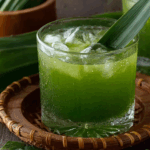
Pandan Juice
- Prep Time: 10 minutes
- Cook Time: 10 minutes
- Total Time: 20 minutes
- Yield: 2 servings 1x
- Category: Beverage
- Method: Stovetop
- Cuisine: Southeast Asian
- Diet: Vegan
Description
Refreshing pandan juice made from fragrant pandan leaves, infused with simple syrup for a naturally aromatic and sweet beverage served over ice.
Ingredients
- 4 pandan leaves
- 2.5 cups water
- 4 tablespoons sugar
Instructions
- Wash the pandan leaves thoroughly. Cut 2 of the pandan leaves into 1-inch lengths, giving about ½ cup of leaf pieces.
- Combine ½ cup of pandan leaf pieces with ½ cup of water in a blender. Blend until the leaves are broken down, then strain to extract ½ cup of bright green pandan extract.
- In a small saucepan over medium heat, combine 2 cups of water, 4 tablespoons sugar, and the remaining 2 pandan leaves (cut or knotted). Simmer for 10 minutes to infuse the syrup with pandan aroma. Let it cool.
- Mix ½ cup pandan extract with 2 cups pandan-infused simple syrup. Chill in the refrigerator.
- Serve the pandan juice over a glass of crushed ice and garnish with fresh pandan leaves if desired.
Notes
- For a stronger flavor, allow the pandan leaves to steep in the syrup longer.
- You can adjust the sugar to taste for more or less sweetness.
- Serve immediately over ice for the best refreshing experience.
Nutrition
- Serving Size: 1 glass
- Calories: 60
- Sugar: 15g
- Sodium: 5mg
- Fat: 0g
- Saturated Fat: 0g
- Unsaturated Fat: 0g
- Trans Fat: 0g
- Carbohydrates: 16g
- Fiber: 0g
- Protein: 0g
- Cholesterol: 0mg
Keywords: pandan juice, pandan drink, Asian beverage, pandan extract, refreshing summer drink
How to Make Pandan Juice at Home
Homemade pandan juice is not only flavorful but also easy to prepare. When you make it yourself, you control the sweetness, freshness, and quality of ingredients. This section covers everything you need to know to craft an authentic Thai-style pandan juice at home.
Step-by-Step Recipe for Authentic Juice
Before you start, gather the freshest pandan leaves you can find. Fresh leaves give the best color and aroma. You’ll also need water, sugar, and a blender for extraction. The process involves making an extract, infusing the flavor into syrup, and mixing it into a refreshing drink.
Ingredients for Pandan Juice
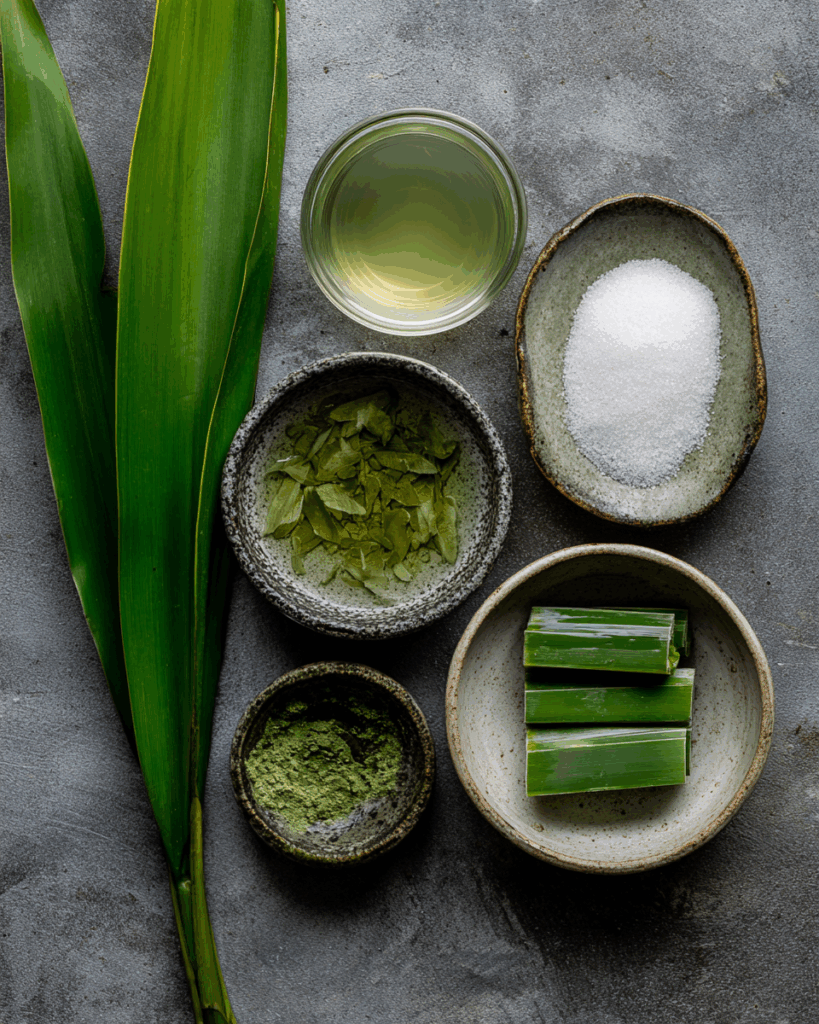
Essential Ingredients You’ll Need
To make authentic pandan juice, here’s what you should prepare:
- 4 pandan leaves – fresh, washed, and divided into two portions
- 2.5 cups water – filtered water works best
- 4 tablespoons sugar – adjust according to your preferred sweetness
These simple ingredients work together to deliver the iconic green hue and aromatic sweetness that pandan juice is known for. Fresh leaves are critical; avoid dried or frozen pandan leaves when possible, as they can affect both the taste and color.
Instructions for Making the Juice
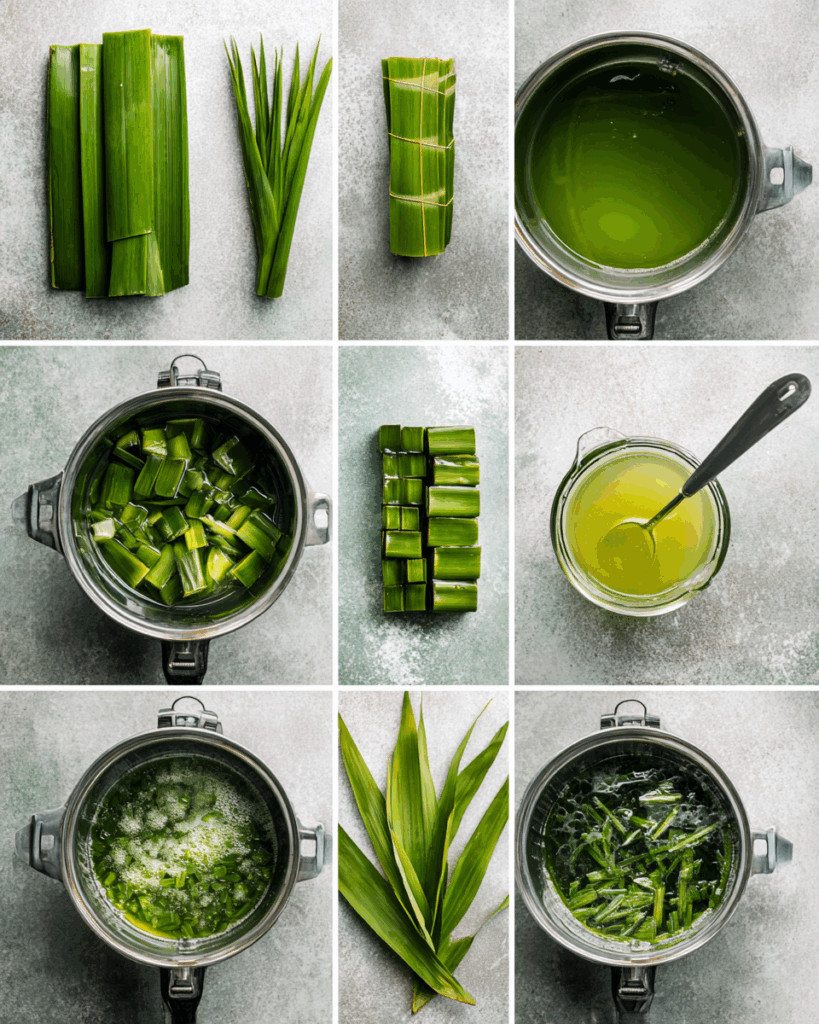
Make Pandan Extract
- Wash the pandan leaves thoroughly to remove any dirt.
- Cut 2 leaves into 1-inch lengths, which should yield about ½ cup of pandan pieces.
- Blend the pieces with ½ cup of water until the leaves are broken down.
- Strain the blended mixture using a fine sieve or cheesecloth to separate the liquid.
- Collect the strained liquid—you now have ½ cup of bright green pandan extract.
Make Simple Syrup
- In a small saucepan over medium heat, combine 2 cups of water with 4 tablespoons of sugar.
- Add the remaining 2 pandan leaves, either knotted or cut, into the pot.
- Simmer the mixture for about 10 minutes to allow the leaves to infuse their flavor into the water.
- Remove from heat and allow the syrup to cool completely.
Mix and Serve Pandan Juice
- Combine the ½ cup pandan extract with 2 cups of the cooled pandan-infused syrup.
- Stir well and chill in the refrigerator until cold.
- When ready to serve, pour the juice over a glass of crushed ice.
- Garnish with a fresh pandan leaf for a vibrant and aromatic finish.
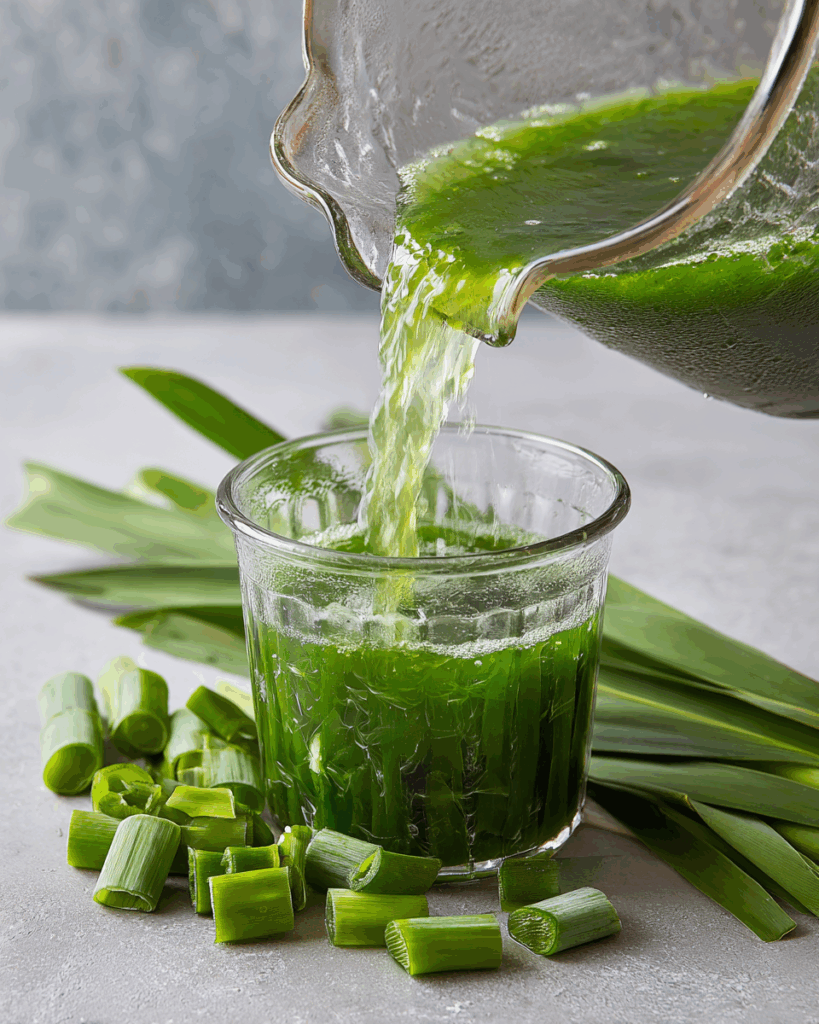
Tip: Serve this with a side of Thai Coconut Pancakes or Thai desserts to create an authentic Thai experience at home.
Pandan Juice vs Extract
Differences Between Pandan Juice and Pandan Extract
Although they may sound similar, pandan juice and pandan extract serve different purposes in cooking and beverages. Pandan juice is a diluted drink prepared with pandan extract and sweetened syrup, meant to be consumed as a refreshing beverage. On the other hand, pandan extract is a concentrated liquid made solely from blended pandan leaves and water.
It has an intense flavor and is commonly used in desserts, cakes, and savory dishes.
When making desserts like custards or cakes, pandan extract is the go-to because it provides a strong aroma without adding extra liquid. Meanwhile, pandan juice is perfect as a drink or for recipes where you want a milder pandan flavor. Learn more about preparing both versions from Earth to Veg’s detailed guide.
Which One Should You Use in Cooking?
The choice between juice and extract depends on your recipe. For beverages, desserts, and refreshing drinks, pandan juice is ideal because it is already sweetened and diluted. For baking or recipes requiring a punch of flavor, pandan extract is your best bet. If you’re unsure, start with extract and adjust the intensity by diluting it with water or syrup. Check out Simply Suwanee’s pandan juice recipe to see how you can incorporate both in your kitchen.
Where to Buy Pandan Juice
Finding Pandan Drink Near You
Looking to buy pandan juice instead of making it? Many Asian grocery stores carry bottled or canned pandan drinks in their beverage aisles. You can also find pandan leaves in the freezer section of these stores, perfect for making your own at home. Online retailers such as Amazon offer pandan juice in cans, extracts, and even pandan-flavored syrups. Searching “pandan juice near me” will often reveal local Thai restaurants or cafes that serve this refreshing drink. For a quick overview of where to purchase, explore Hungry in Thailand’s pandan drink insights.
Choosing Between Fresh Pandan Juice and Juice Can
Fresh pandan juice offers the best taste, aroma, and nutritional benefits, while canned versions are convenient and shelf-stable. However, canned drinks may contain preservatives and artificial colors. If you’re after authenticity and health benefits, homemade or freshly prepared pandan juice is always superior. Yet, for those short on time, canned versions can still deliver that signature pandan taste in seconds.
Variations and Popular Forms of This Green Aromatic Drink
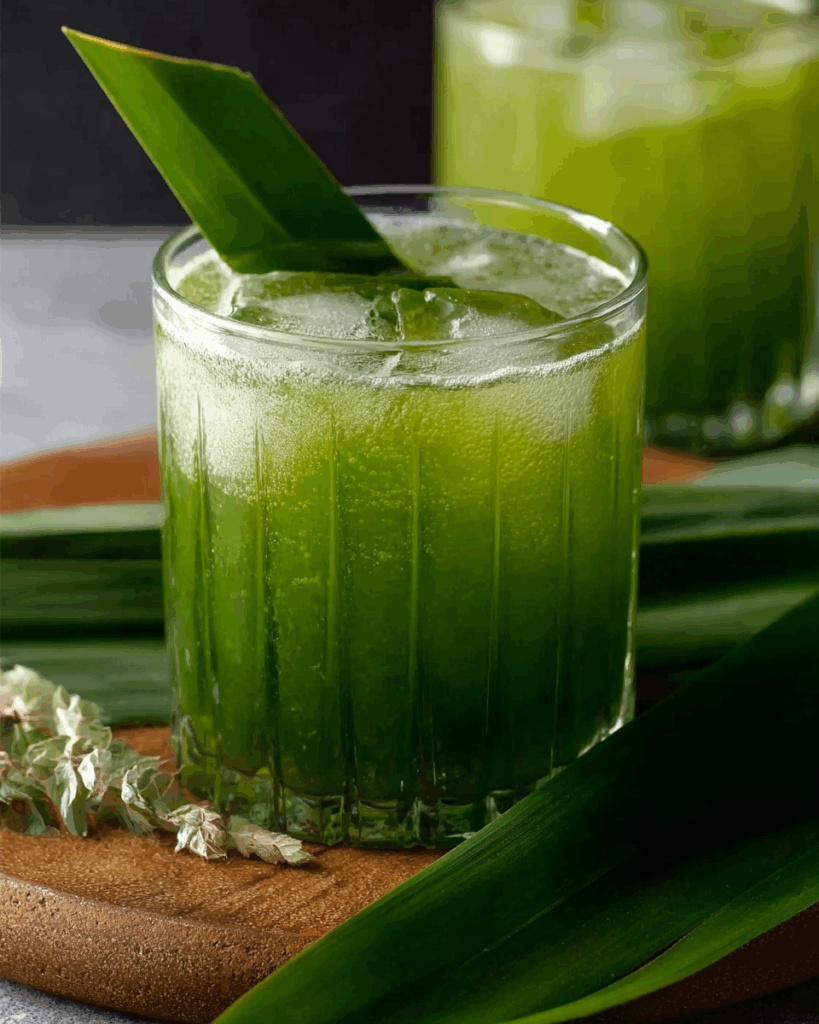
Homemade Fresh Blend
The homemade version remains the most authentic and flavorful. It is prepared by blending fresh leaves with water, extracting the natural aroma and vibrant color. Unlike commercial options, this version has no preservatives or artificial additives. The sweetness level can be adjusted to suit individual preferences, making it a versatile base for many culinary applications. Freshly prepared liquid also retains more antioxidants and beneficial compounds, offering health advantages alongside its delightful taste.
Canned Beverage
For those who value convenience, the canned option is widely available in Asian supermarkets and online. This version typically comes pre-sweetened and ready to drink. While it may lack the vibrant aroma of a freshly prepared batch, it still delivers a satisfying taste. However, consumers should check the label for added sugars and artificial flavorings. Some brands use natural extracts, while others rely on synthetic coloring to achieve the green hue. Despite these differences, canned options are perfect for quick refreshments or for those without access to fresh leaves.
Concentrated Extract
This form is a highly potent version obtained from steeping or processing the leaves to release their essential compounds. The result is a thick liquid that carries an intense aroma and flavor. Concentrated extract is ideal for recipes where a small amount needs to deliver a big impact, such as in cakes, puddings, and custards. Because of its strength, it should be used sparingly to avoid overpowering other ingredients. It can also be diluted with water and sweetener to create a lighter beverage, offering versatility for both cooking and drinking.
Comparison with the Leaf-Based Liquid
There’s often confusion between the prepared drink and the concentrated extract. While the drink is diluted, sweetened, and ready for consumption, the extract is strong, unsweetened, and mainly used as an ingredient in other recipes. This distinction is important for anyone experimenting in the kitchen because using extract directly without diluting can lead to an overwhelming taste. Understanding this difference helps in achieving the right balance of aroma and flavor.
Nearby Purchase Options
For those who prefer to buy rather than prepare, local Asian stores often carry bottled versions, while markets in Southeast Asia may sell it freshly made. Online platforms also offer various brands, from canned to concentrated forms. When searching, terms like “near me” can lead to discovering local cafes or restaurants serving this traditional drink. Opting for freshly made options whenever possible ensures a more authentic experience, though packaged products are suitable for convenience.
Benefits of Exploring Different Forms
Trying out different variations allows you to find the version that suits your lifestyle and taste. Fresh preparations highlight the natural essence of the leaves, canned versions offer ease, and concentrated extracts bring culinary flexibility. Each form has its place, whether for a quick drink, a cooking ingredient, or a base for desserts. By experimenting with these variations, you can enjoy the unique qualities of this green aromatic beverage in multiple ways.
Creative Ways to Use This Tropical Leaf Drink
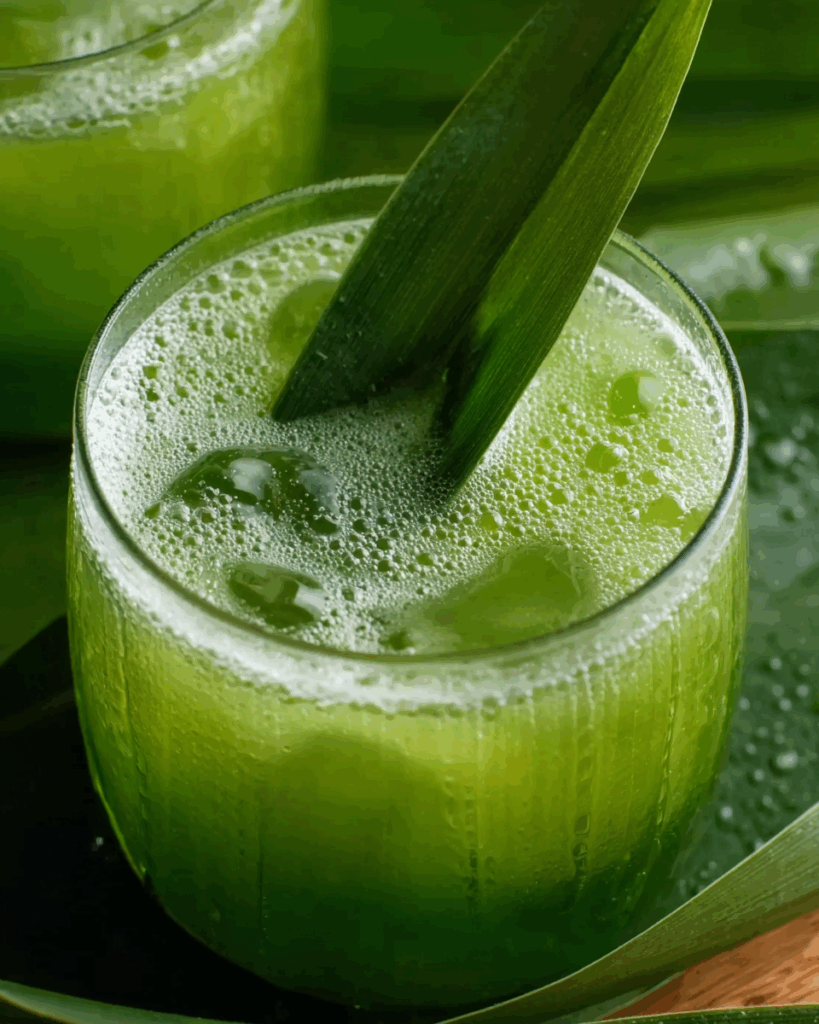
Cooking with This Fragrant Beverage
Beyond simply sipping it cold, this aromatic beverage can be incorporated into numerous dishes to elevate their flavor. In Southeast Asian cooking, the infused liquid is often used as a natural flavoring for rice dishes. For example, when added to steaming jasmine rice, it gives the grains a subtle, sweet aroma that complements curries and grilled meats perfectly. It can also be used to flavor soups, enhancing broths with a delicate floral note. Some cooks even substitute water with this drink when boiling noodles, creating an enticingly fragrant base for noodle soups.
Another creative use is blending it into smoothies. When mixed with coconut milk, tropical fruits like mango or pineapple, and a touch of honey, the resulting smoothie is rich in flavor and aroma. Additionally, it can be reduced into a syrup to drizzle over pancakes, waffles, or ice cream, adding a unique twist to everyday desserts. Bakers also love incorporating it into bread, cakes, and puddings, as it imparts a beautiful green hue without artificial coloring.
Desserts and Drinks Featuring the Green Essence
In Thai cuisine, desserts are a perfect canvas for showcasing the delightful qualities of this drink. Classic treats like custards, puddings, and layered jellies often feature its sweet aroma. When used in traditional sweets such as coconut jelly or sticky rice, it harmonizes beautifully with the creamy richness of coconut. Even simple baked goods like cupcakes or donuts can be transformed by using the infused liquid as part of the batter or glaze.
Apart from desserts, this fragrant beverage pairs wonderfully with teas and lattes. Mixing it with black tea and condensed milk creates a creamy, floral latte that’s irresistible. It can also be frozen into ice cubes and added to cocktails, providing a gentle aroma as the cubes melt. For an indulgent treat, blend it with condensed milk, cream, and a pinch of salt to make a frozen dessert that rivals any store-bought ice cream.
Conclusion
Why You Should Try Making This Aromatic Drink at Home
Preparing this green-infused beverage in your own kitchen allows you to fully enjoy its authentic flavor and aroma. By using fresh leaves, you control the quality of ingredients, ensuring a clean and natural result. The preparation process itself is simple yet rewarding, as it connects you with traditional Southeast Asian cooking methods. Beyond its pleasant taste, the drink offers numerous health advantages, from calming effects to digestive support. Making it at home also gives you the freedom to adjust sweetness levels and experiment with additional ingredients like coconut milk or honey to suit your preferences.
Frequently Asked Questions
What fruit is pandan?
Interestingly, the plant used to make this drink is not a fruit but an herbaceous tropical plant. It belongs to the screwpine family and thrives in warm, humid climates. While the leaves are the most commonly used part for cooking and beverages, the plant does produce a fruit in some species. However, this fruit is rarely consumed and is not related to the preparation of the drink. The leaves remain the star ingredient, valued for their fragrance and versatility in culinary traditions across Southeast Asia.
What does pandan juice taste like?
The flavor is unlike any other. It combines a sweet, floral aroma with hints of vanilla and coconut, resulting in a unique taste profile that’s both delicate and rich. When prepared correctly, it has a refreshing sweetness that pairs well with both savory and sweet dishes. Some describe the taste as slightly nutty with grassy undertones, creating a balance between herbal freshness and dessert-like warmth. Its mild sweetness makes it an appealing choice for those who prefer lightly flavored beverages.
What is pandan juice good for?
This traditional beverage offers more than just a pleasant taste. It is known to have calming properties, making it popular for reducing stress and promoting relaxation. Some cultures use it to help lower blood pressure, relieve headaches, and soothe mild fevers. The antioxidants present in the leaves also contribute to improved immunity and may help combat inflammation. Additionally, it supports digestive health by reducing bloating and aiding in toxin elimination. Because it’s caffeine-free, it’s a great hydrating option suitable for all ages.
What is in pandan juice?
This refreshing drink is made from a few simple ingredients. The core element is the long, narrow leaves of the tropical screwpine plant. These leaves are blended with water to extract their flavor and vibrant green color. The resulting extract is then combined with a lightly sweetened syrup, creating a drink that is both fragrant and soothing. Sometimes, variations include the addition of coconut milk or other flavorings to enhance the taste. The natural oils in the leaves are what give the beverage its distinctive aroma, while the sugar balances out the subtle grassy notes.

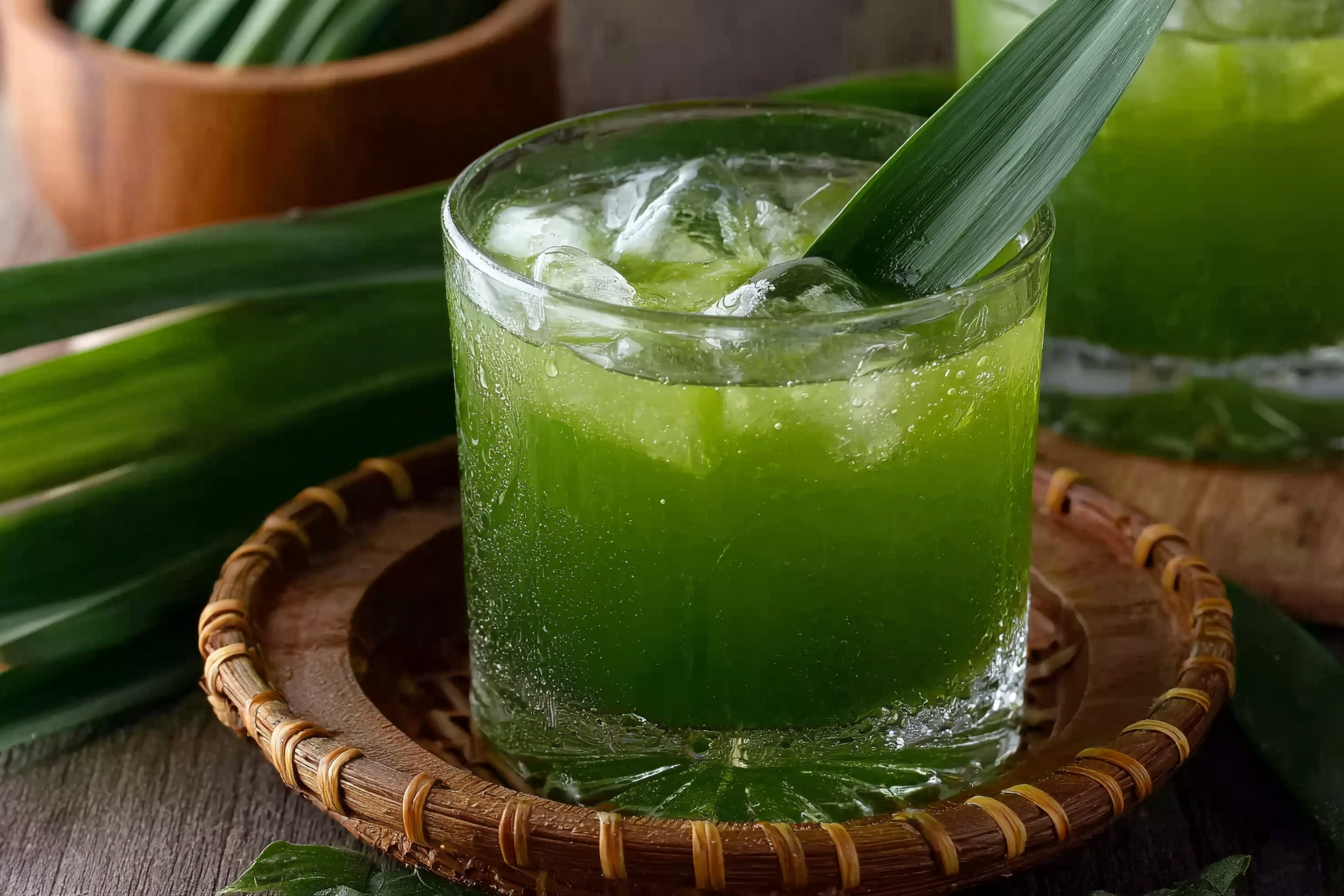
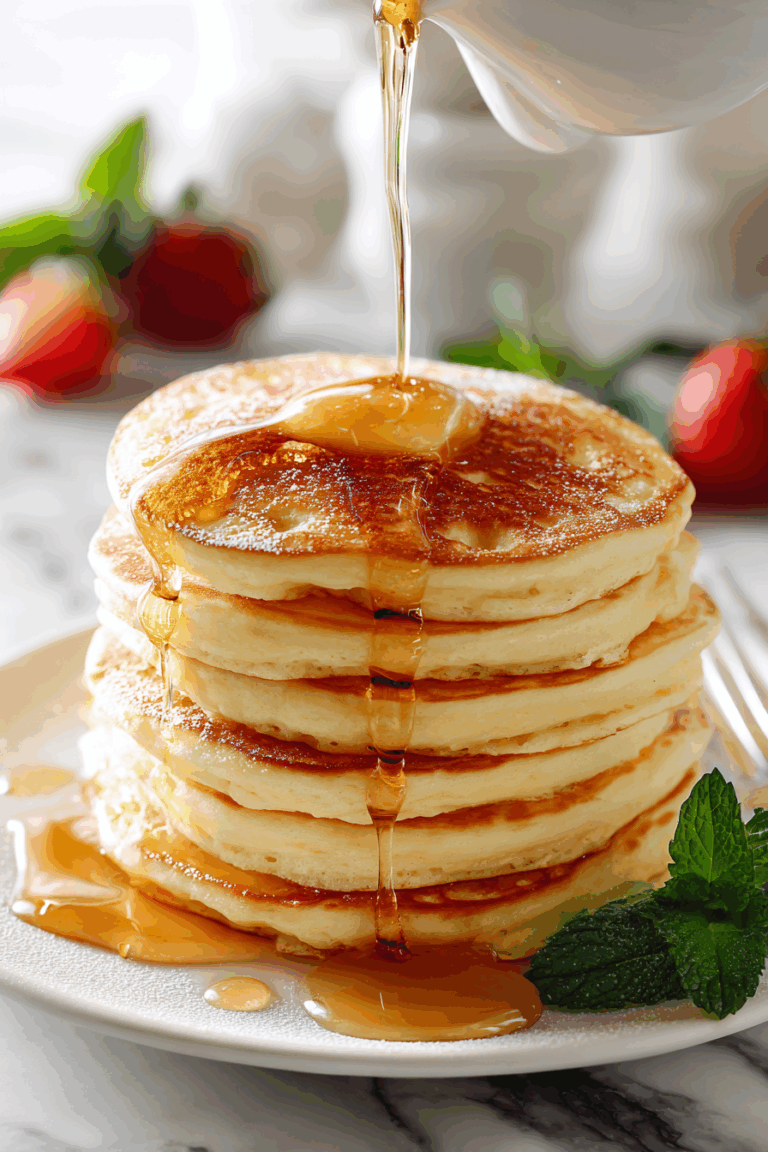

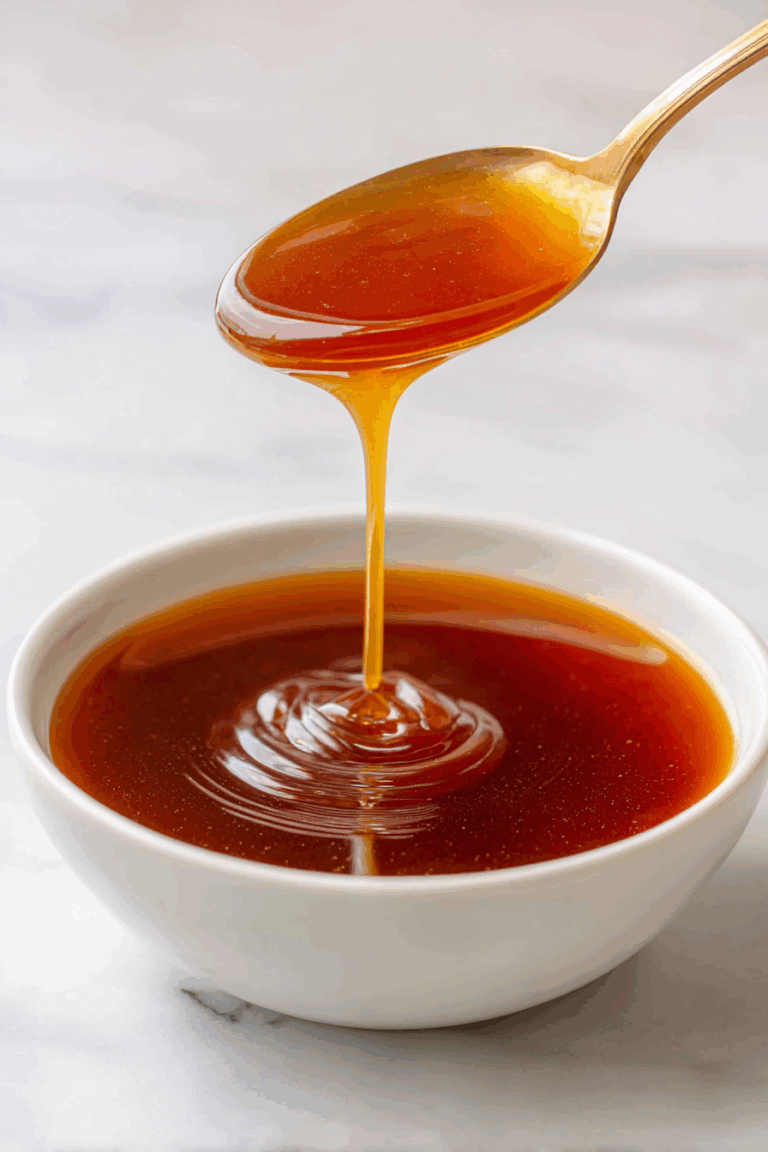

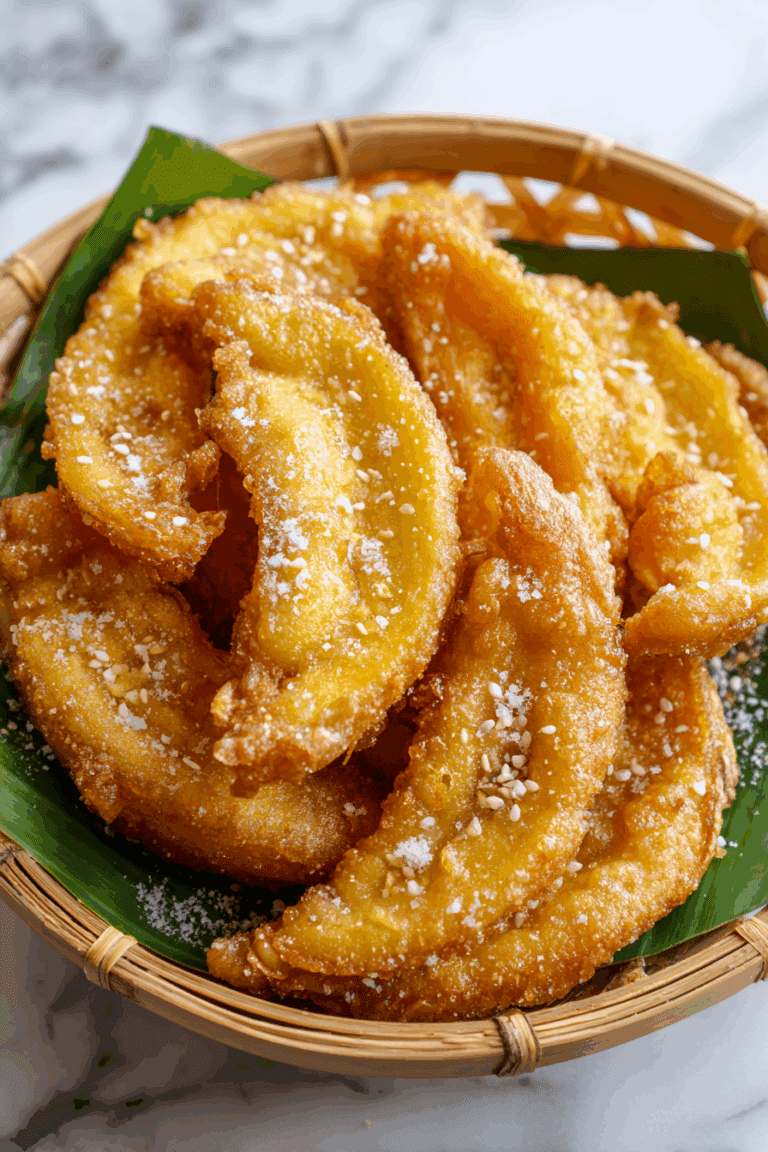

Hello.This post was extremely fascinating, particularly because I was browsing for thoughts on this matter last Wednesday.